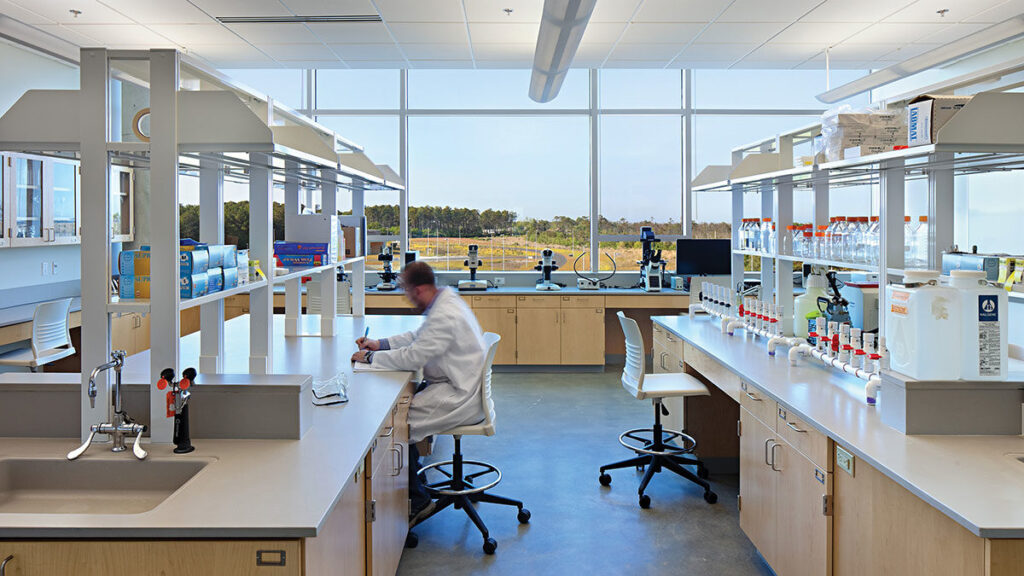A Primer to Lab Planning
By: Todd Christensen

Over the last thirty years, Scheer Partners has supported the growth of hundreds of scientific companies from pre-revenue start-ups to Fortune 500 leaders. In that span, we’ve witnessed an unprecedented wave of human innovation; the rise of the internet, the proliferation of smartphones, the mapping of the human genome, the expansion of cloud computing, and now the surge of artificial intelligence. Yet through all of this, the bedrock of research and discovery has remained the same: the humble bench-top lab.
The importance of physical lab space, and by extension, lab design, cannot be overstated. It is the foundation on which scientific progress is built, and its relevance shows no sign of waning. For that reason, understanding the fundamentals of lab design is critical for any institution or company considering creating or expanding laboratory space.
While there are many principles that guide effective design, nearly all of them point back to a single concept: efficiency. Efficiency may sound straightforward, but in labs it operates at every scale. At the smallest level, it shapes the ergonomics of hand movements at a bench; at the largest, it defines how entire programmatic elements, offices, support rooms, and core facilities are organized within a building. Efficiency not only improves workflow, but it also translates into substantial cost savings when constructing one of the highest-cost space types in commercial real estate.
This will be a multi-part series, where I will outline a step-by-step process for planning an efficient lab. This guide is a product of Scheer Partners’ historic experience overseeing lab construction, as well as excerpts from Harvard T.H. Chan School of Public Health’s textbook: Guidelines for Laboratory Designs.
Stage One: Planning Before Designing
Laboratories are highly specialized environments that must support a wide range of scientific objectives. If requirements aren’t defined rigorously at the outset, the design process can become convoluted and little more than guesswork. It is essential that before putting pen to paper, a plan is outlined to guide the process.
For this exercise, we will assume that the user is growing out of an existing lab space and has an understanding of their current scientific requirements. The process would then start with a baseline assessment of physical requirements. This means documenting the core components of a lab, from bench lengths and sink counts to the number of fume hoods and safety stations. Each of these elements consumes valuable square footage and must be quantified early. By breaking down how space is currently used, and what is needed in the future, you create a data-driven foundation for the rest of the project.
Measure existing or estimate the required linear feet and/or area of the following:
• Benches by height
• Sink(s)
• Scientific equipment (general/special)
• Chemical storage
• Lab waste collection
• Chemical hood(s)
• Safety equipment station(s)
Calculate functions as a percentage of total Net Area (area excluding circulation):
• Current or desired net sf per scientist
• The percentage of each lab function as a part of the net total
• Laboratory and laboratory support
• Special functions (animal facilities, etc.)
• Offices for scientists and administrators
• Personnel support functions
• Building support functions
• General storage
Next should be an analysis of what constraints or limitations may exist on the site. Zoning requirements, traffic impacts, available utilities, environmental factors, and local code compliance all shape what is feasible. It is equally important to understand whether a new facility’s infrastructure can accommodate the desired research. Skipping this step often leads to costly redesigns later in the process.
Finally, interviews with the end users will guide expectations. Interviews with Principal Investigators, staff scientists, and administrators will define goals and expose pain points that numbers alone can’t capture. These conversations should address:
• Scientific objectives and priorities
• Existing deficiencies in space or workflow
• Desired adjacencies between processes and equipment
• Anticipated standards from funders or regulators
• The level of flexibility needed to adapt to future research
• Safety and security considerations as hazard levels evolve
Taken together, these inputs establish a program of requirements; a clear, data-informed picture of what the lab must achieve. With this foundation in place, design can proceed as a deliberate translation of scientific needs into physical space. This initial phase may be led by a lab planner, an experienced leasing agent, or a construction manager. Because it is primarily driven by the lab’s end user, it is often completed at no cost as part of a feasibility analysis.
What’s Next?
Stage One is about getting the fundamentals right, documenting existing conditions, understanding the site, and consolidating stakeholder feedback. This gives you the program of requirements, the baseline against which everything else will be designed. We are assembling the parts that will eventually result in a test fit and initial budget.
In Part Two of this series, we’ll move from broad planning into quantification. That means:
• Establishing net areas for each functional element of the lab, from core research spaces to support rooms and offices, so every square foot is accounted for.
• Preparing a room-type list based on user interviews, translating abstract needs into tangible spaces.
• Defining the standard lab module, the repeatable unit that becomes the DNA of the entire building.
Each of these steps builds on the last. Together, they create a framework that makes labs both more efficient and more adaptable, qualities that protect value in one of the most expensive real estate asset classes.
